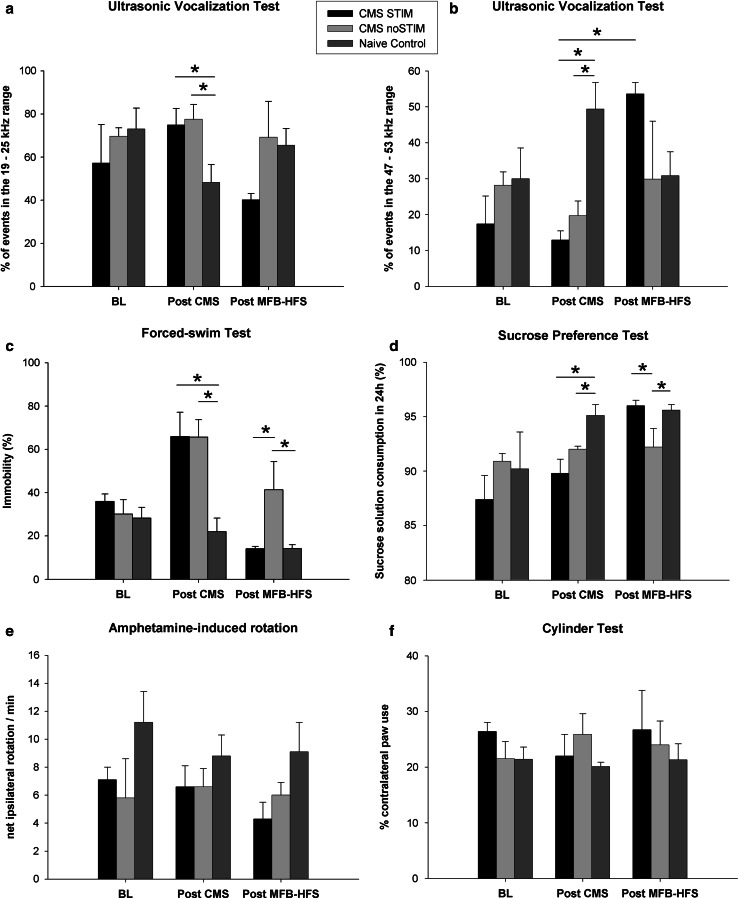Fig. 3.
Behavioral testing. a, b Ultrasonic vocalization (USV): the chronic mild stress protocol (CMS) led to an increase in the number of calls at 22 kHz (CMS-STIM vs control, p = 0.03, CMS-noSTIM vs control, p = 0.05) as well as to a decrement of high-frequency calls (CMS-STIM vs control, p = 0.001, CMS-noSTIM, p = 0.001). Following MFB-DBS, a session effect was detected, with an increase of 50 kHz calls in the CMS-STIM group (p = 0.005); c forced swim test (FST): Exposure to mild stressors caused exacerbation of despair (CMS-STIM vs control, p = 0.0004, CMS-noSTIM vs control, p = 0.0003) that was reverted by chronic stimulation of the MFB to a level comparable with the control group (CMS-STIM vs control, p = 0.3, CMS-noSTIM vs control, p = 0.02, CMS-STIM vs CMS-noSTIM p = 0.003); d sucrose preference test (SPT): anhedonic-like behavior was induced by CMS (CMS-STIM vs control, p = 0.01, CMS-noSTIM vs control, p = 0.06, CMS-STIM vs CMS-noSTIM, p = 0.1) and rescued by MFB-DBS (CMS-STIM vs control, p = 0.8, CMS-noSTIM vs control, p = 0.02, CMS-STIM vs CMS-noSTIM, p = 0.03); e, f amphetamine-induced rotation and cylinder test: assessment of forelimb akinesia and drug-induced rotational behavior did not reveal any impact of neither the mild stressors nor the neuromodulation of the MFB on behavioral outcome (p = 0.6 and p = 0.1, respectively). BL baseline test, post-CMS behavior tests following the chronic mild stress protocol, post-MFB-HFS behavior assessment after chronic continuous high-frequency deep brain stimulation of the medial forebrain bundle. Asterisks indicate statistical significance across groups/sessions

